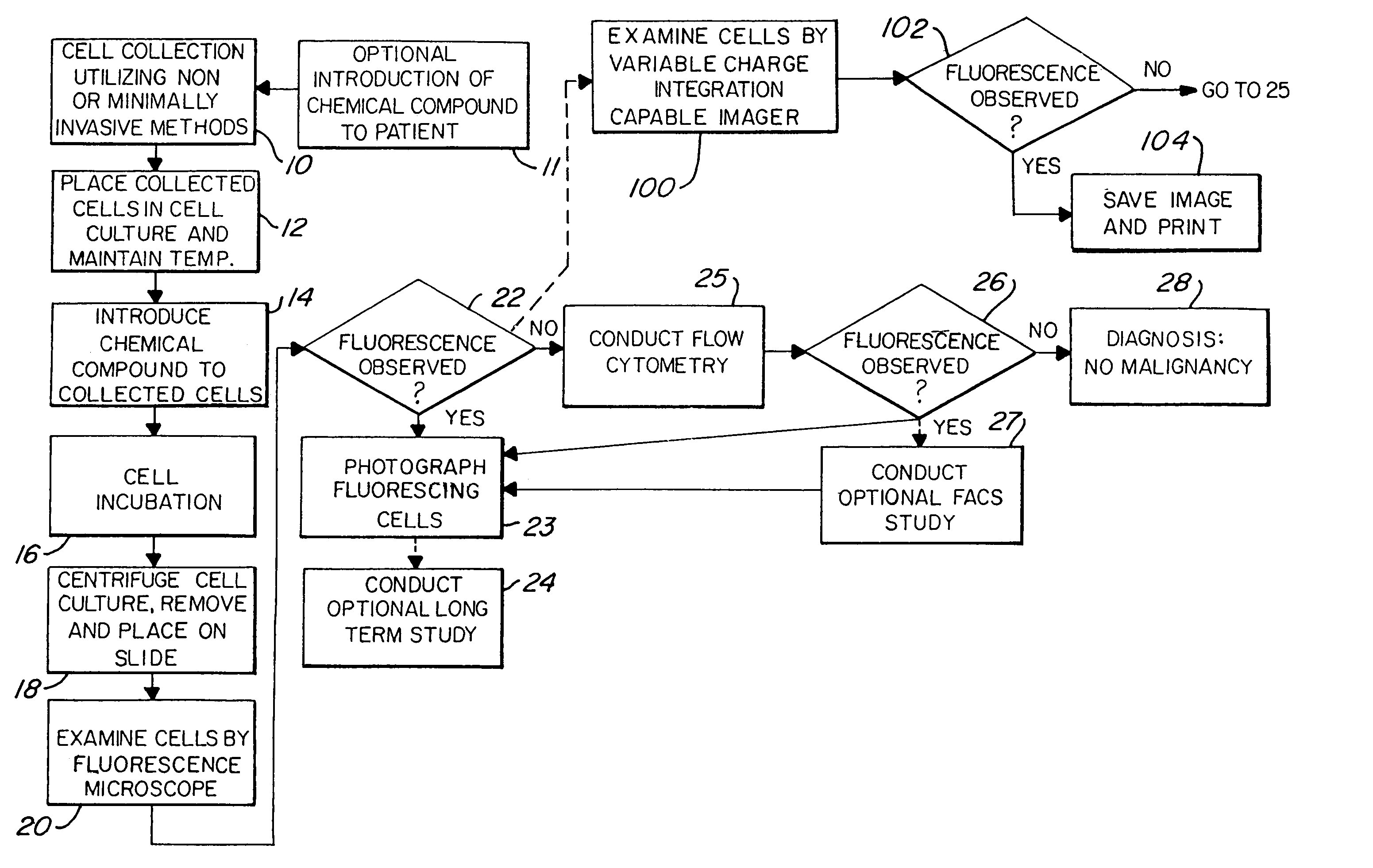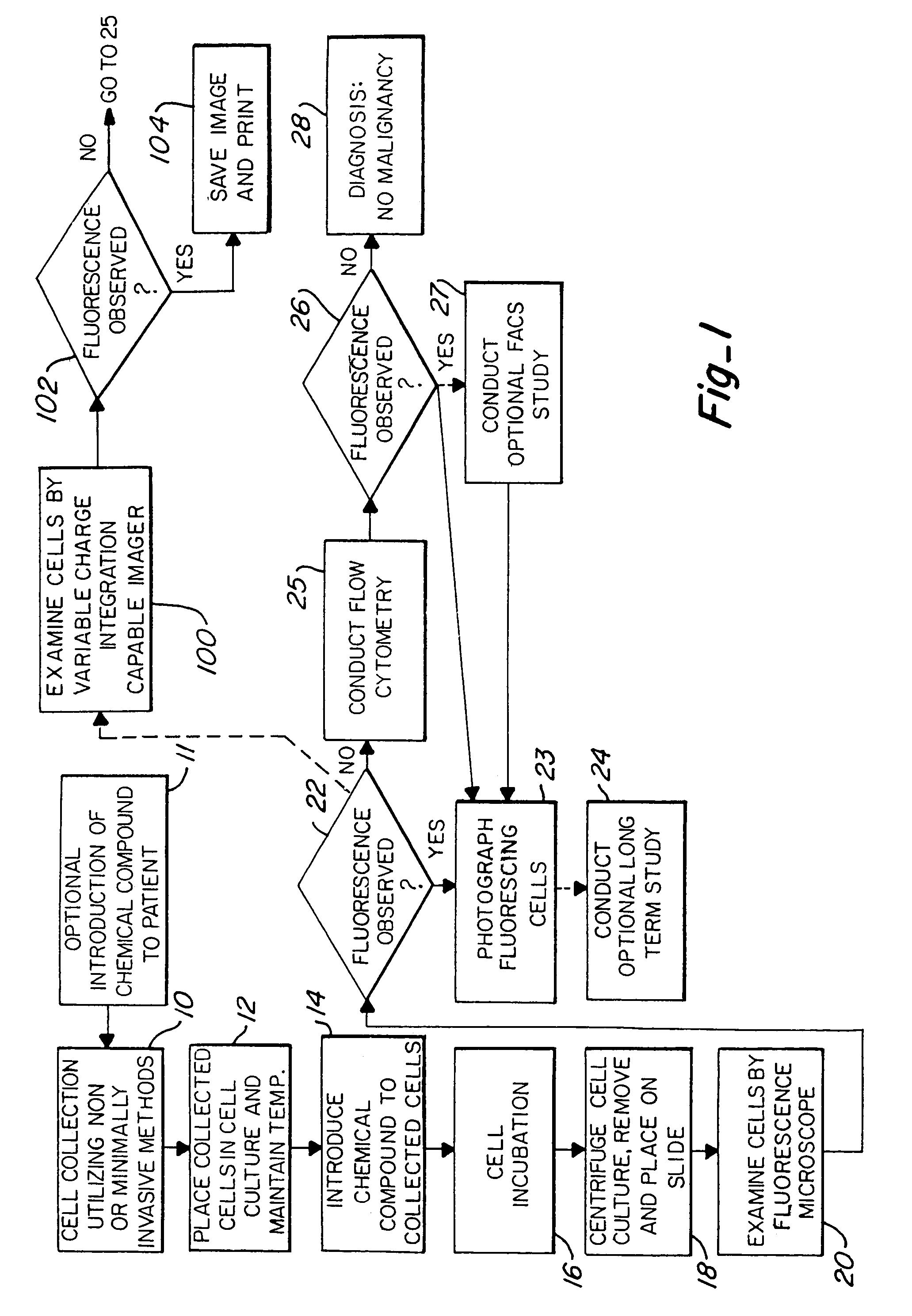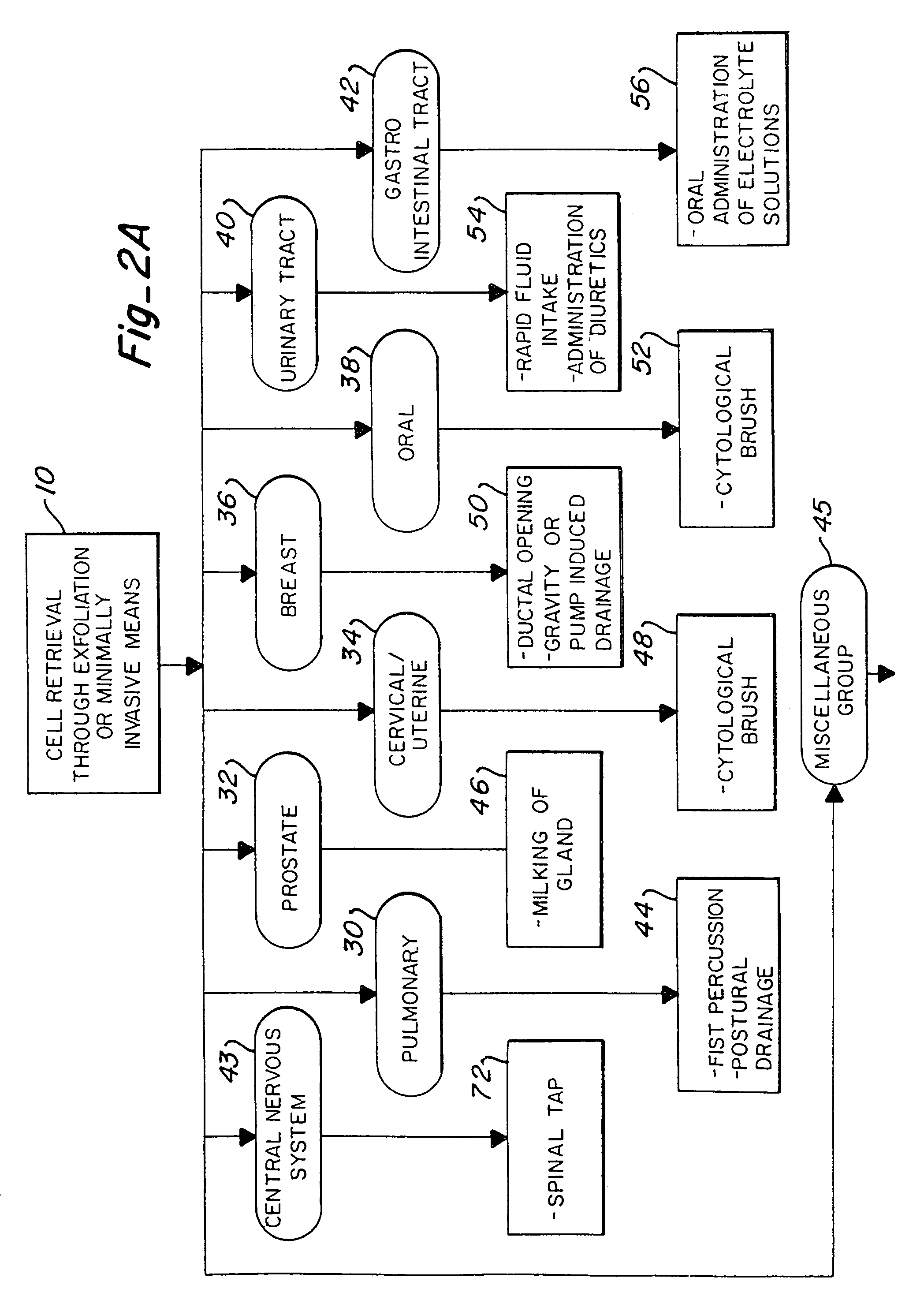Method of cancer screening primarily utilizing non-invasive cell collection, fluorescence detection techniques, and radio tracing detection techniques
a cancer and cell collection technology, applied in the field of cancer screening, can solve the problems of complex equipment, special medical expertise, and many references, and achieve the effects of reducing patient trauma along with the cost of the procedure, avoiding invasiveness, and avoiding invasiveness
- Summary
- Abstract
- Description
- Claims
- Application Information
AI Technical Summary
Benefits of technology
Problems solved by technology
Method used
Image
Examples
Embodiment Construction
[0027]FIG. 1 illustrates the major steps in one aspect of the method of this invention. As shown, the process begins with non-invasive means or minimally invasive means of cell exfoliation / collection 10. Once collected, the cells are then placed in a culture media or cell transport media, shown at step 12. The goal is to keep the collected cells alive and viable after removal from the body. Thus, even at this intermediate step, the cells should be maintained at approximately 37° C. by use of a water bath or other means. Next, the collected cells are exposed to a chemical which induces fluorescence in pre-malignant and malignant cells, illustrated as step 14. As discussed above, the chemical compounds which are contemplated for use in this invention include, but are not limited to, 5-ALA, protoporphyrin IX, TCPP, hematoporphyrin derivative, photofrin, and photofrin II. Other possible compounds which may be used include uroporphyrin; coproporphyren; tetraphenylporphinesulfonate (TPPS)...
PUM
| Property | Measurement | Unit |
|---|---|---|
| wave lengths | aaaaa | aaaaa |
| temperature | aaaaa | aaaaa |
| incubation time | aaaaa | aaaaa |
Abstract
Description
Claims
Application Information
 Login to View More
Login to View More - R&D
- Intellectual Property
- Life Sciences
- Materials
- Tech Scout
- Unparalleled Data Quality
- Higher Quality Content
- 60% Fewer Hallucinations
Browse by: Latest US Patents, China's latest patents, Technical Efficacy Thesaurus, Application Domain, Technology Topic, Popular Technical Reports.
© 2025 PatSnap. All rights reserved.Legal|Privacy policy|Modern Slavery Act Transparency Statement|Sitemap|About US| Contact US: help@patsnap.com



